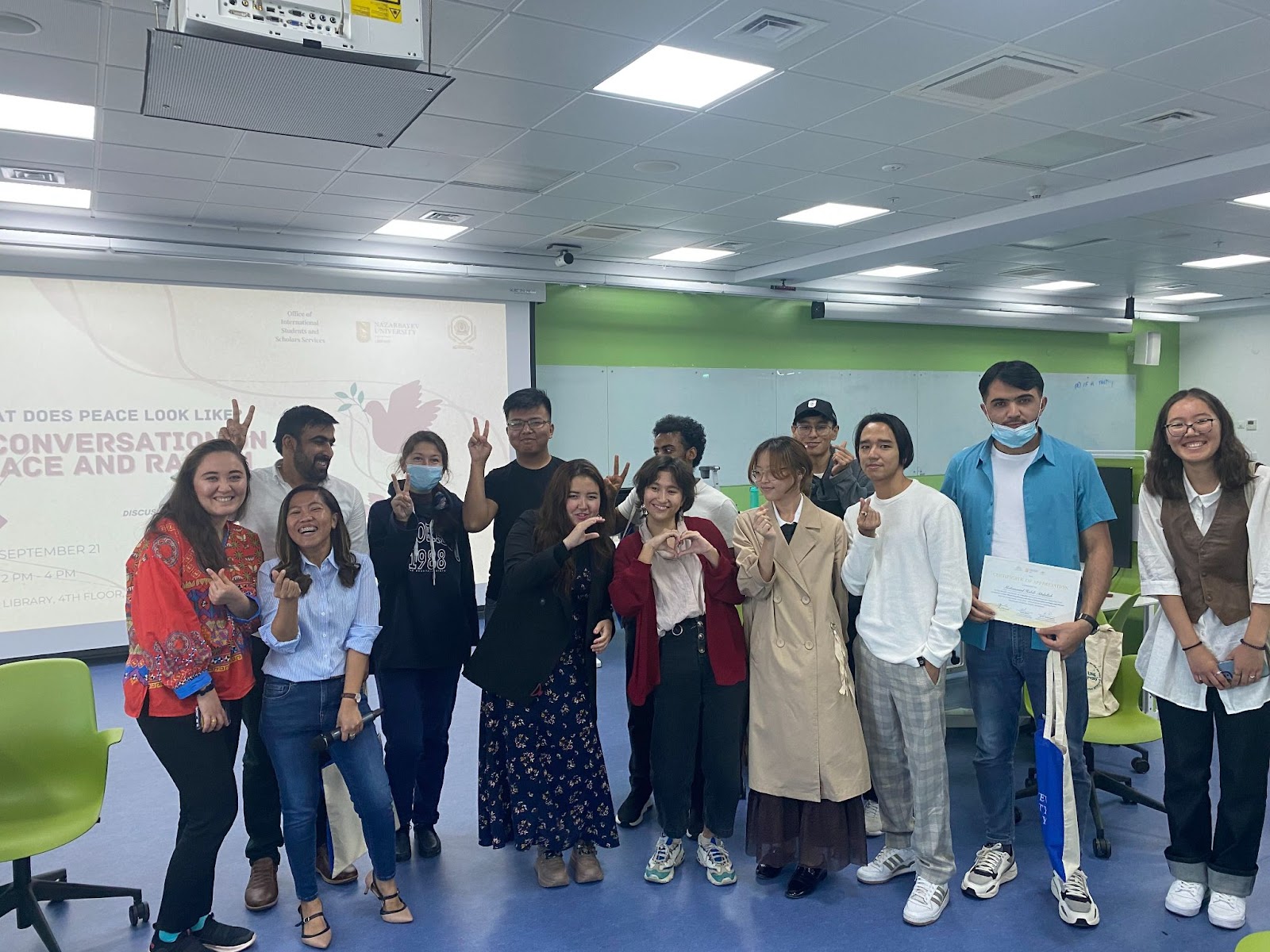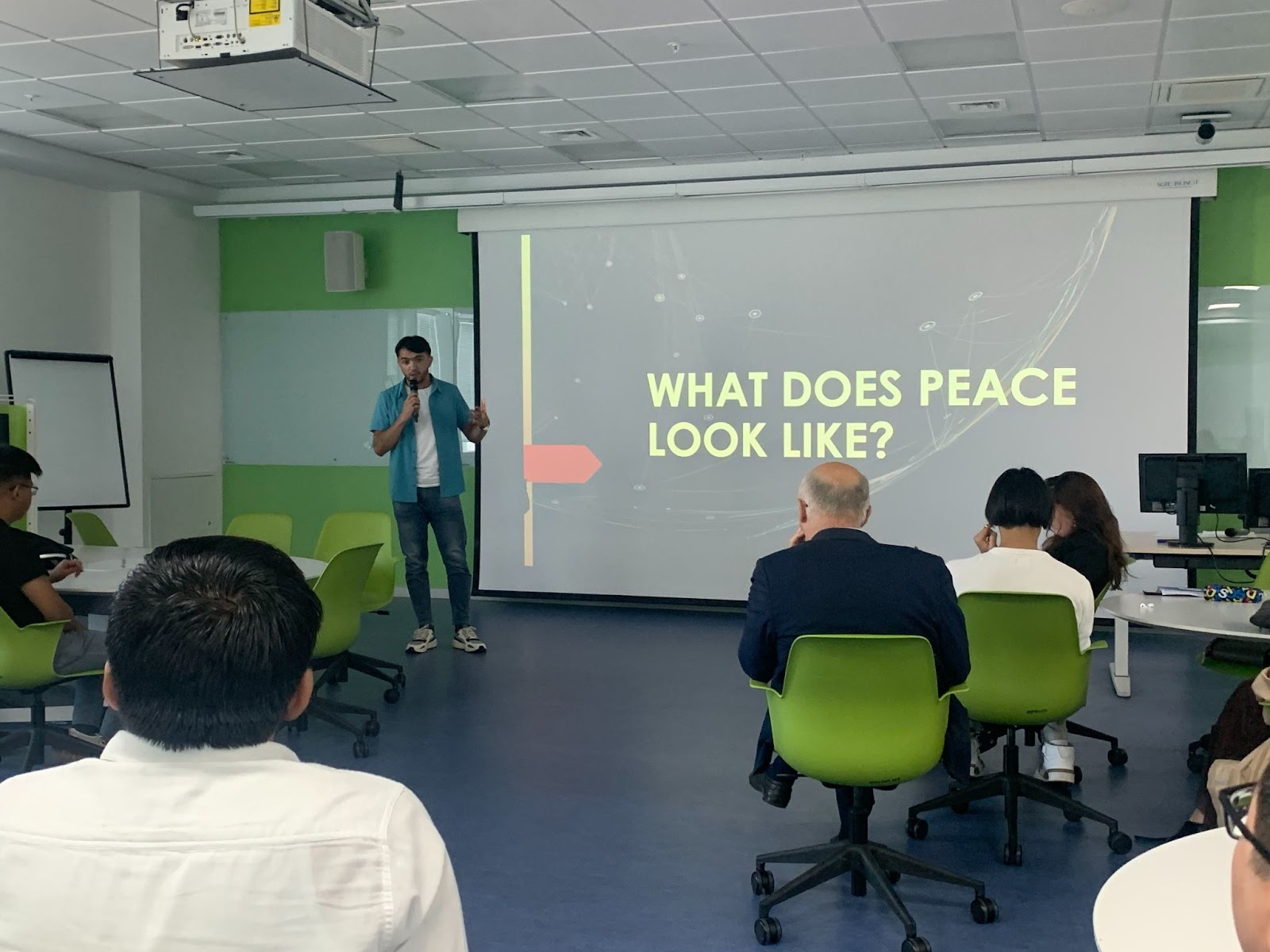Sep 25, 2022
International Day of Peace-2022
What Does Peace Look Like? A Conversation on Peace and Racism
In celebration of the UN International Day of Peace every 21st of September, the NU Library in partnership with NU SG-Ministry of Education and the Office of the International Students and Scholars Services held an event entitled What Does Peace Look Like?: A Conversation on Peace and Racism last 21 September 2022 at the Active Learning Room, NU Library on strengthening the ideals of peace in the NU community. In line with this year’s theme, End Racism. Build Peace, this event aims to: (1) create a safe space to foster conversation and dialogue; (2) reduce stereotypes among different groups of people and race; (3) strengthen the ideals of peace through understanding and appreciation of various cultures; and (4) promote inclusivity and diversity among members of the NU academic community.


Figure 1. Some of the attendees of the event
Now in its 2nd year, the event was inline with the UNSDG Goal 16: Promote just, peaceful and inclusive societies. The event featured lightning talks from remarkable storytellers who would like to share their stories in line with the theme of the event. As a pre-event, a Free Mic was set at the Atrium to encourage conversation and dialogue and basically answering the question What Does Peace Look Like?
Free Mic
The idea behind the free mic was to encourage everyone to grab the microphone and say something about peace by making it one line, speaking their mind, and have the option to be anonymous or be famous. Participants talk about whatever answers or wishes they have. The answers varied from personal feelings about the Peace to the universal meaning. The recording of Free Mic will be uploaded on the Library Youtube channel.
Lightning Talks
The first lightning talk was given by Dinara Pisareva, PhD, Assistant Professor at Department of Political Science and International Relations at the School of Sciences and Humanities. It was a brief introduction to the current state of the world, the wars between Russia and Ukraine, and the border clashes between Kyrgyzstan and Tajikistan. Even though the participants were not affected by this situation at the moment, a very interesting discussion happened, signifying that these things should be talked about and not to keep silent about it.

Figure 2. Dinara Pisareva giving talk on peace
Muhammad Awais Jamali, a graduate student from School of Engineering and Digital Science (SEDS) expressed that the peace cannot be imagined without war further denoting that to stay in peace, people should always be prepared for the war. He briefly described and presented the images of how war affected peace in Pakistan, especially the Indian-Pakistan Kashmir war, the 9/11 situation, and the aftermath of these wars to the victims. Hence, in his own viewpoint, to stay in peace means to be ready for war.
Figure 3. Muhammad Awais Jamali giving a talk about peace in Pakistan
For Mohammad Habib Abdullah, a 2nd year Public Administration student from Graduate School of Public Policy (GSPP), Peace is the absence of war. He shared his childhood experiences in Afghanistan, when they left their country with fear of death. They have lived to survive, and they didn’t know what peace looks like. Thus, for them, Peace is the absence of war.

Figure 4. Mohammad Habib Abdullah sharing about the meaning of Peace in Afghanistan
A different viewpoint of what Peace looks like was shared by Kebir Mohammed Jemal, also a graduate student from SEDS. For him, Peace equates to equality, acceptance, harmony with nature, inner balance, and progress. Peace is subjective and it can be interpreted differently by each person. For him, Peace is not just the absence of war; it is something abstract and each person has his own meaning.

Figure 5. Kebir Mohammed Jemal wondering about subjectivity of Peace
Gaziza Tariq from the Library shared her story about how interracial couples could be judged by society. What were the struggles that they should overcome to live their lives and be together? She mentioned the judgment and sidelong glances of society, where they were asked to leave, and even physical maltreatment they received from strangers. It was quite a hard story to listen to but it was indeed a topic that should not be ignored. Thus, society should work on the tolerance of interracial couples and overcome such situations.

Figure 6. Gaziza’s personal story
Group Conversations
The event became a safe space and a good venue for discussion. With the informal and conversational atmosphere of the event, the participants were able to express freely their opinions and thoughts on topics that are still taboos to them up to this day. As Peace takes a lot of different meanings and is very subjective, the discussion has even become more fruitful and thought-provoking. Topics on wars, racism, and LGBTQ were some of the things that have been discussed. Asking braver questions and straightforward, no holds barred stands were the name of the game and it was indeed very meaningful to witness how the discussions became even more mature as more and more minds were heard with ears that are very much eager to listen. Despite such differences in views, the participants were satisfied with how the discussion went. The participants were able to maintain the atmosphere of respect all throughout the discussion. In the end, the event was indeed a success as it was able to achieve its main goal--to promote the ideals of peace in the NU community.
So What Does Peace Look Like?
There is no single answer on what does peace look like? As this is very subjective, everyone can have their own take on peace. As Martin Luther King (1965) said, “peace is not merely the absence of tension, but the presence of justice.” It doesn't mean that if we do not experience war at the moment, we have peace. Think of those who don't have any food on their plate, those who lost their jobs and careers during the crisis, those who are grieving because of the lost their loved ones, those who are struggling to find their own place and identity, those who are trying to make ends meet. They are not in a bloody war, but they still feel not at peace either. It was hoped that the event will help foster peace and some realizations not just inside the university, more so when we go out of the four walls of the campus.
Reference:
King, M. L. (1956). When Peace Becomes Obnoxious 1956. The Papers of Martin Luther King, Jr. Volume III: Birth of a New Age, December 1955, 207-208.